|
Much of the city’s wildlife is found within
parklands, which offer animals shelter and food, as well as
a place to raise their young and a spot to rest during migration.
This section presents images of some of these land animals
– snakes, bats, chipmunks, and flying squirrels – but mostly
of birds, the most visible and abundant class of local vertebrates.
New York City’s 1,700 public parks, managed
by City of New York/Parks & Recreation, occupy 28,000
acres, 10,500 of which are natural areas overseen by the Parks
Department’s Natural Resources Group (NRG). Since May 2001,
NRG’s Forever Wild program has designated 8,500 acres
in 51 sites for special protection. Naturalists of Parks’
Urban Park Rangers oversee public programs and education,
wildlife management, and, since 1997, the reintroduction of
native plant and animal species to the city parks.
Additional major natural areas include Jamaica
Bay Wildlife Refuge, and other New York City units of Gateway
National Recreation Area, administered by the National Park
Service; several New York State Department of Environmental
Conservation locations; and semipublic/private institutions,
including Wave Hill, the New York Botanical Garden, and Woodlawn
Cemetery in the Bronx, and the Botanical Garden and Green-wood
Cemetery in Brooklyn.
Without undervaluing other city parks, special
mention must be made of Central Park. Surrounded by Manhattan’s
skyscrapers, it is a green haven for people and wildlife –
especially birds: 285 species have been sighted there over
recent years. During spring and fall migrations, millions
of birds pass through the city, following the Atlantic Flyway.
Manhattan’s towers present a special peril: birds usually
fly at night, and city lights disorient many of them, causing
them to crash, sometimes fatally, into buildings. Happily,
most fly through safely. The importance of oases such as Central
Park, where the travelers can stop to recuperate and feed,
cannot be overemphasized.
Check out the sighting
log to record your interaction with some of the native
New York City wildlife featured in Urban Neighbors.
You may also browse the sighting log by animal, borough, park
or natural area, and/or habitat to view a sighting you have
submitted or to read others’ observations.
|
1
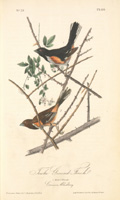
Rufous-sided
Towhee / NYPL
2
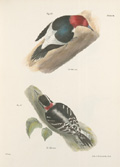
Red-headed
Woodpecker / NYPL
3
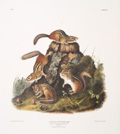
Eastern Chipmunk
/
NYPL
4
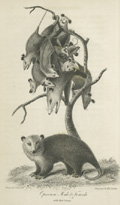
Opossum / NYPL
5
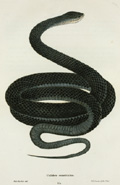
Black Racer / NYPL
|






